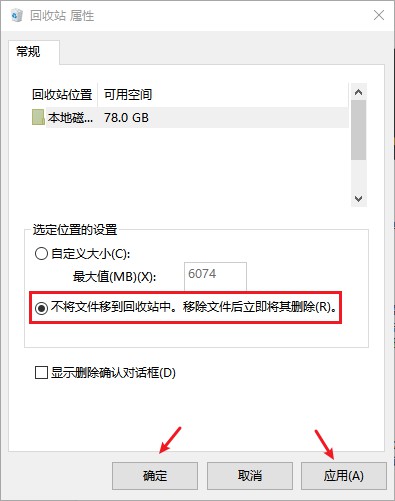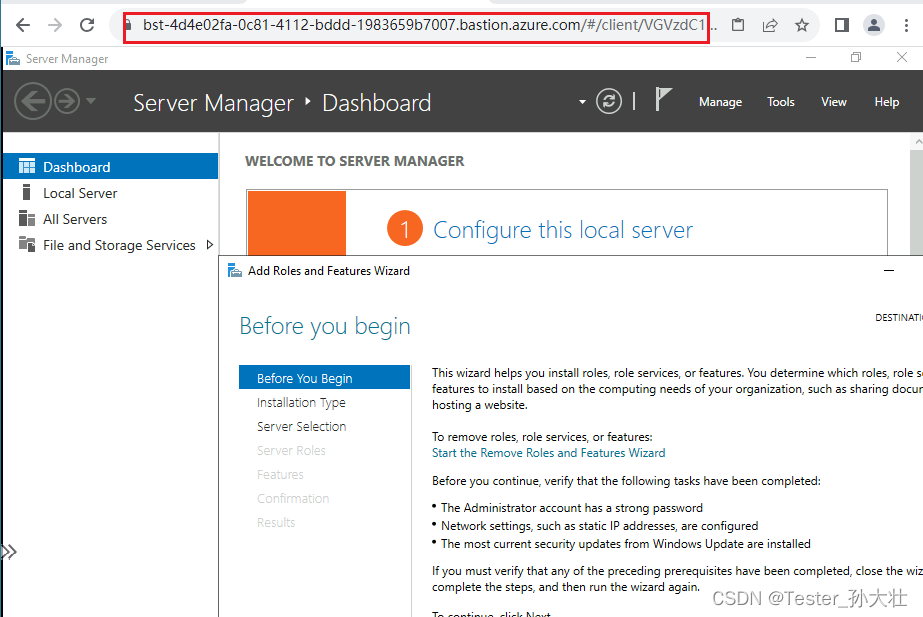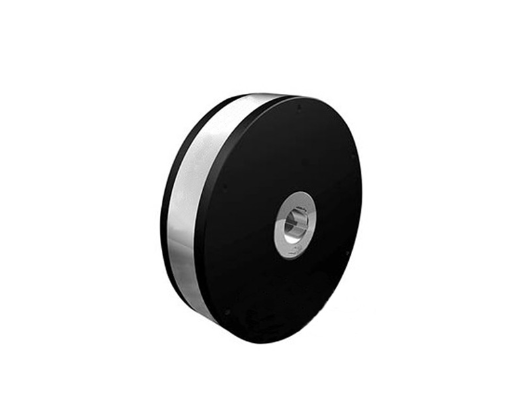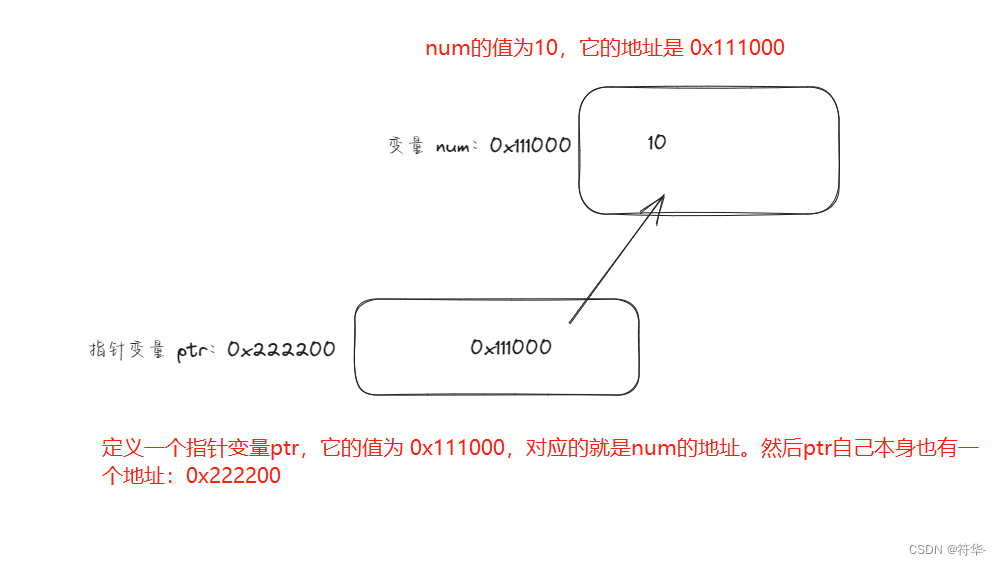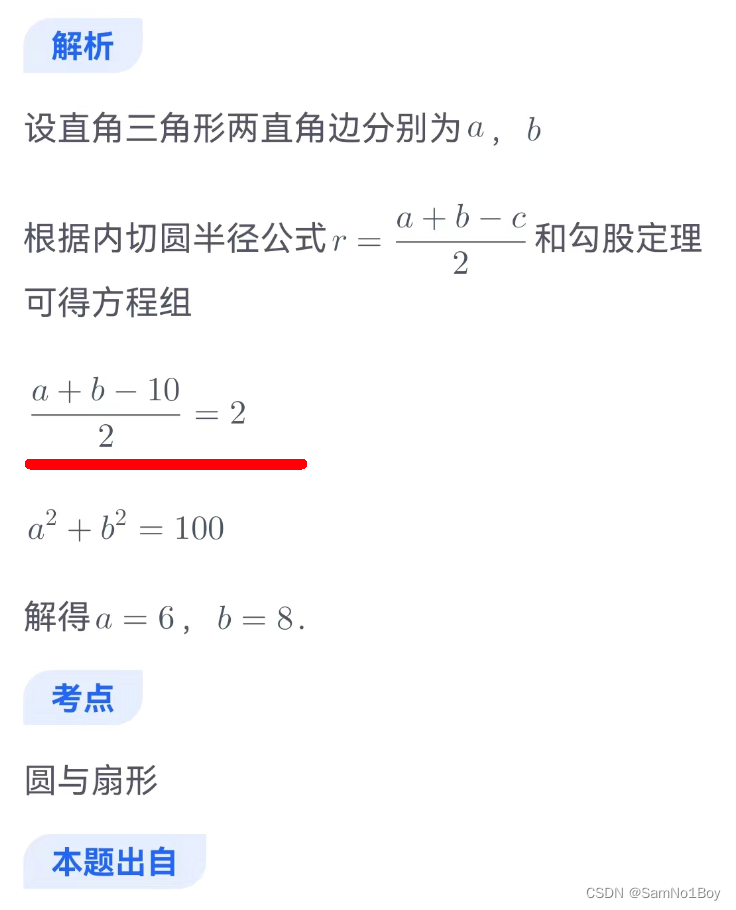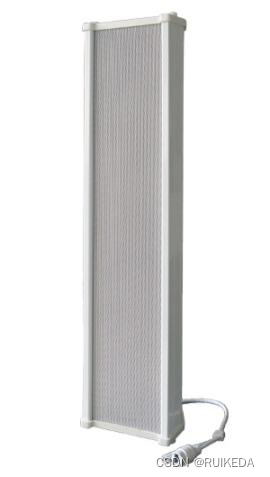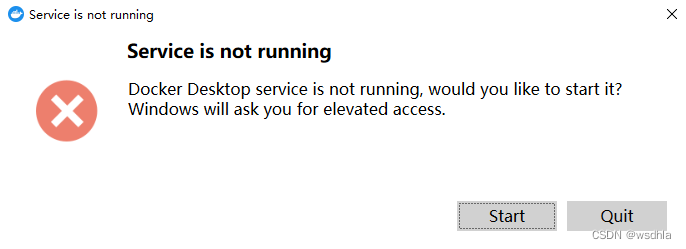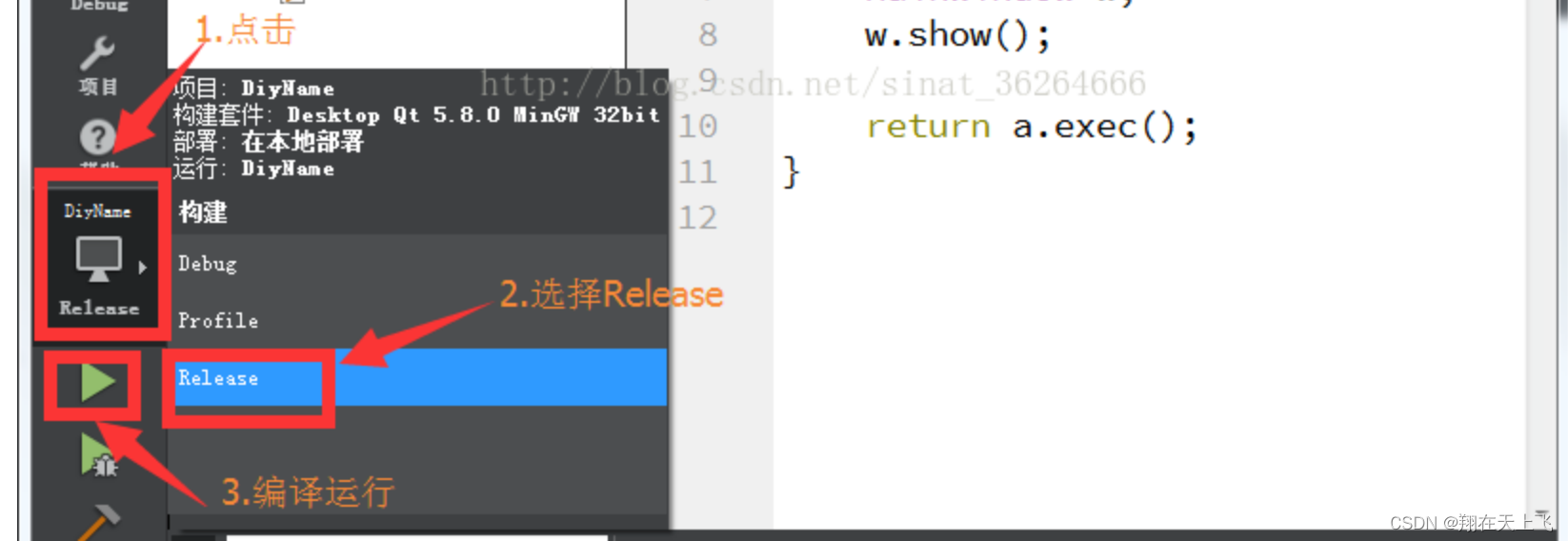导读
在日常生活中,我们经常能看见查询附近商家的功能。
常见的场景有,比如你在点外卖的时候,就可能需要按照距离查询附近几百米或者几公里的商家。
本文将介绍如何使用Redis实现按照距离查询附近商户的功能,并以SpringBoot项目作为举例。
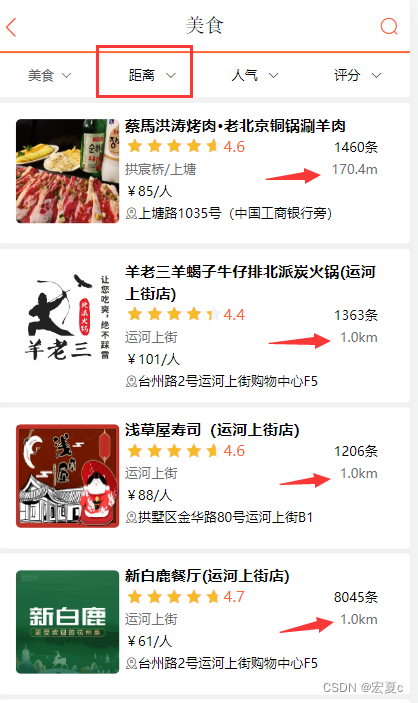
想知道这样的功能是如何实现的吗?接着往下看吧!
Redis地理位置功能
Redis是一种高性能的键值存储数据库,具有快速读写能力和丰富的数据结构支持。在Redis 3.2版本之后,它引入了地理位置(Geospatial)功能,使其可以轻松处理与地理位置相关的数据。
地理位置功能的核心数据结构是有序集合(Sorted Set),它将元素与分数(score)关联起来。在地理位置功能中,分数表示地理位置的经度和纬度,而元素则是一个标识符,比如商户的ID。
我们只需要在数据库中存储商家的经纬度,以商家id作为key,经纬度作为value存入redis中,就可以通过redis命令来获得以某一个点为圆心一定范围内的商家,以及他们之间的距离。
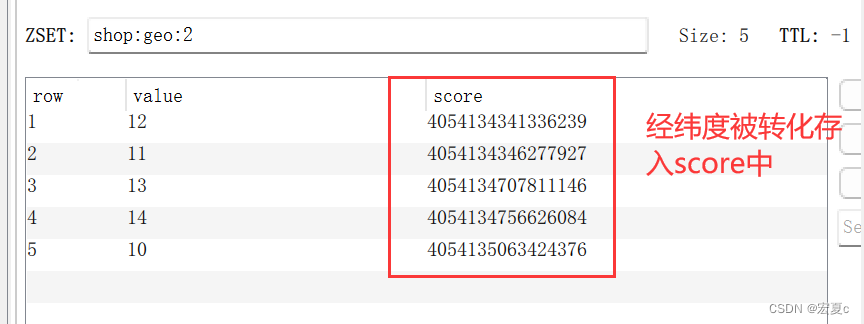
常用命令
1. GEOADD:将地理位置添加到有序集合中
使用GEOADD命令,可以将一个或多个地理位置添加到有序集合中。语法如下:
GEOADD key longitude latitude member [longitude latitude member ...]
示例:
GEOADD stores 116.404 39.915 "storeA"
GEOADD stores 116.418 39.917 "storeB"2. GEODIST:计算两个位置之间的距离
GEODIST命令用于计算两个位置之间的距离,可以指定单位(米、千米、英里、英尺等)。
GEODIST key member1 member2 [unit]
示例:
GEODIST stores storeA storeB km3. GEORADIUS:按照距离查询位置范围内的元素
GEORADIUS命令用于在指定的地理位置范围内查询元素。它可以按照经纬度坐标和半径来查询,还可以限制返回的结果数量。
GEORADIUS key longitude latitude radius unit [WITHCOORD] [WITHDIST] [WITHHASH] [COUNT count] [ASC|DESC] [STORE key]
示例:
GEORADIUS stores 116.408 39.916 1 km WITHDIST COUNT 5
4. GEOHASH:获取位置的geohash值
GEOHASH命令用于获取指定位置的geohash值,geohash是一种将地理位置编码成字符串的方法,可以用于快速近似的位置计算。
GEOHASH key member [member ...]
示例:
GEOHASH stores storeA storeB
5. GEOPOS:获取一个或多个位置的经纬度坐标
GEOPOS命令用于获取一个或多个位置的经纬度坐标。
GEOPOS key member [member ...]
示例:
GEOPOS stores storeA storeB
6. GEORADIUSBYMEMBER:根据成员获取范围内的元素
这个命令与GEORADIUS类似,但是它以一个已有的成员作为中心点进行查询。
GEORADIUSBYMEMBER key member radius unit [WITHCOORD] [WITHDIST] [WITHHASH] [COUNT count] [ASC|DESC] [STORE key]
示例:
GEORADIUSBYMEMBER stores storeA 1 km
地理位置功能不仅在查询附近商户等实际应用中非常有用,还可以应用于地理分析、位置推荐等领域。它通过利用Redis强大的有序集合数据结构,使得处理地理信息变得高效、灵活,并且易于集成到现有的应用中。无论是构建LBS应用还是处理位置相关数据,Redis的地理位置功能都能为开发者提供强大的支持。
Java代码实现
将数据库中的商家经纬度存入redis
数据库中有一张商家表,其中有经度,纬度这两个字段。我们可以通过单元测试批量将这些商家的经纬度数据存入redis。key为商家id,value为经纬度。
/**
* 将数据库中的商户坐标添加到缓存
*/
@Test
void addShopGeo2Redis(){
//获取商户集合
List<Shop> list = shopService.list();
//根据商户类型分类
Map<Long, List<Shop>> collect = list.stream().collect(Collectors.groupingBy(Shop::getTypeId));
for (Map.Entry<Long, List<Shop>> longListEntry : collect.entrySet()) {
Long typeId = longListEntry.getKey();
String key = "shop:geo:" + typeId;
//获取商户经纬度
List<Shop> shopList = longListEntry.getValue();
List<RedisGeoCommands.GeoLocation<String>> locations = new ArrayList<>(shopList.size());
for (Shop shop : shopList) {
// stringRedisTemplate.opsForGeo().add(key,new Point(shop.getX(),shop.getY()),shop.getId().toString());
//先收集完所有商户的地理位置,再一次性添加到redis
locations.add(new RedisGeoCommands.GeoLocation<>(shop.getId().toString(),new Point(shop.getX(),shop.getY())));
}
stringRedisTemplate.opsForGeo().add(key,locations);
}
}接口类:queryShopByType(typeId,current,x,y)
定义一个根据商家类型查询所有商家的接口,如果前端传来的参数中携带该用户的经纬度,则代表需要根据距离查询附近商家。
/**
* 根据商铺类型分页查询商铺信息
* @param typeId 商铺类型
* @param current 页码
* @return 商铺列表
*/
@GetMapping("/of/type")
public Result queryShopByType(
@RequestParam("typeId") Integer typeId,
@RequestParam(value = "current", defaultValue = "1") Integer current,
@RequestParam(value = "x", required = false) Double x,
@RequestParam(value = "y", required = false) Double y
) {
return shopService.queryShopByType(typeId, current, x, y);
}
服务类:queryShopByType(typeId,current,x,y)
1.首先判断是否经纬度参数x和y是否为空
2.计算分页参数(redis无法分页,需要手动分页)
3.查询redis
4.获取商户id集合
5.根据商户id查询数据库
6.返回
@Override
public Result queryShopByType(Integer typeId, Integer current, Double x, Double y) {
//1.判断是否需要根据坐标查询
if(x == null || y == null){
//直接数据库查询
Page<Shop> page = query().eq("type_id", typeId).page(new Page<>(current, SystemConstants.DEFAULT_PAGE_SIZE));
return Result.ok(page.getRecords());
}
//2.计算分页参数
int from = (current - 1) * SystemConstants.DEFAULT_PAGE_SIZE;
int end = current * SystemConstants.DEFAULT_PAGE_SIZE;
//3.查询redis,按照距离排序,分页。结果:shopId,distance
String key = SHOP_GEO_KEY + typeId;
GeoResults<RedisGeoCommands.GeoLocation<String>> results = stringRedisTemplate.opsForGeo()
.search(
key,
GeoReference.fromCoordinate(x, y),
new Distance(5000),
RedisGeoCommands.GeoSearchCommandArgs.newGeoSearchArgs().includeDistance().limit(end)
);
//4.解析出id
if(results == null){
return Result.ok(Collections.emptyList());
}
List<GeoResult<RedisGeoCommands.GeoLocation<String>>> list = results.getContent();
if(list.size() <= from){
//没有下一页
return Result.ok(Collections.emptyList());
}
//4.1截取from——end部分
List<Long> ids = new ArrayList<>(list.size());
Map<String, Distance> distanceMap = new HashMap<>(list.size());
list.stream().skip(from).forEach(result -> {
String shopIdStr = result.getContent().getName();
ids.add(Long.valueOf(shopIdStr));
Distance distance = result.getDistance();
distanceMap.put(shopIdStr,distance);
});
//5.根据id查询shop
String idStr = StrUtil.join(",",ids);
List<Shop> shops = query().in("id",ids).last("ORDER BY FIELD(id," + idStr + ")").list();
for (Shop shop : shops){
shop.setDistance(distanceMap.get(shop.getId().toString()).getValue());
}
//6.返回
return Result.ok(shops);
}
}注意点
1.redis查询的结果是从第1条到第end条,不能直接返回第begin条到第end条。
那么如何跳过begin前面的记录呢?
可以使用stream()流的skip()方法,skip()方法中指定参数begin,就会跳过前面的begin条记录。
2.通过redis获取的ids集合,再使用mybatis-plus使用query().in()进行查询时,会破坏数据顺序,如何解决?
手动指定顺序。在后面加上last("ORDER BY FIELD(id," + idStr + ")").list()。而idStr = StrUtil.join(",",ids);


